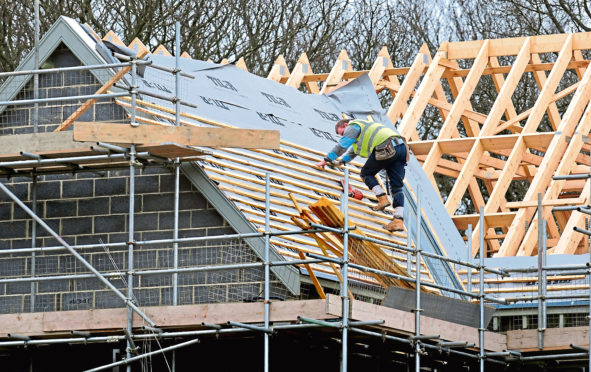Business chiefs have insisted the north and north-east construction market is still healthy despite troubling figures for their industry across the UK.
Brian McQuade, managing director of Kier Regional Building Scotland, said yesterday the public sector procurement pipeline of new primary and acute health facilities in the region was strong, with several new facilities being delivered in Aberdeen, Inverness and Aviemore, as well as on Skye.
He also highlighted “various programmes” of refurbishment and maintenance across the healthcare estate.
Mr McQuade added: “There is also an active pipeline of new, refurbished and extended education stock across the region in the early years, primary, secondary, further education and higher education sectors.
“The private sector is quieter with retail and commercial construction opportunities being few, however, there is evidence that the industrial sector, particularly supporting the oil and gas industry, is beginning to make a return.
“All in all, Kier is still confident about opportunities across north Scotland and this is demonstrated by our robust and diverse pipeline.”
Elliot Robertson, chief operating officer at Stirling and Elgin-based Robertson Group, said a strong order book and good pipeline “ensures that we can we continue to assure a sustainable future for our staff and the communities that we work in”.
According to the latest Markit/Chartered Institute of Procurement and Supply UK construction purchasing managers’ index, output from the sector across Britain has plummeted at its steepest rate since 2009, with Brexit uncertainty and weaker demand hitting all parts of the industry.
The index recorded a reading of 43.1 for June, down from 48.6 in May. Economists were expecting a figure of 49.2.
A reading above 50 indicates growth, with anything below representing contraction.
It was the steepest reduction in overall construction output since April 2009 and marks the fourth time the sector has contracted in the past five months.
Recent figures from the Scottish Building Federation showed construction employment north of the border hit a two-year low during the first quarter of 2019.
The value of the Scotttish industry’s output fell more than £1 billion year-on-year, while employment in the sector dropped by 8,000 to its lowest level since June 2017, SBF said.
Meanwhile, the most recently published construction and infrastructure market survey findings from surveyors’ organisation Rics showed a “continued deceleration” and the lowest reading for output growth in six years.
